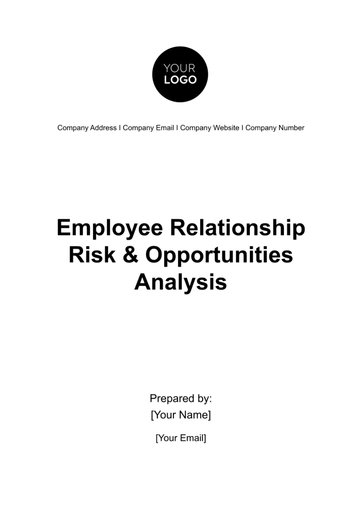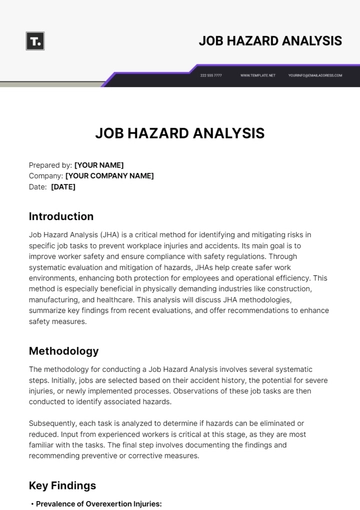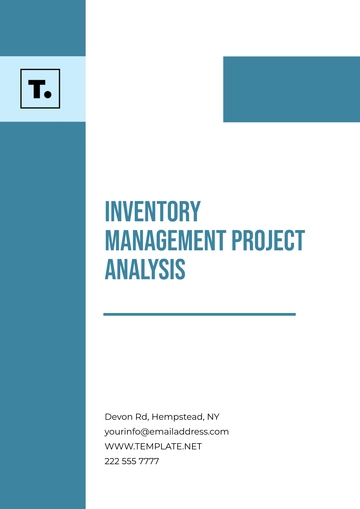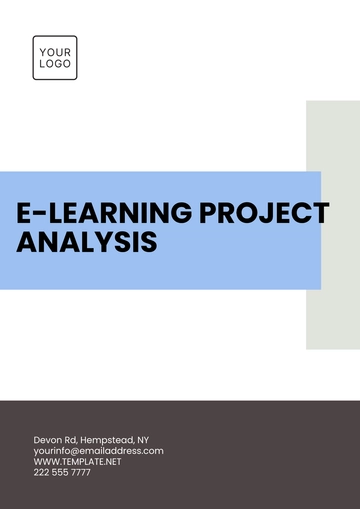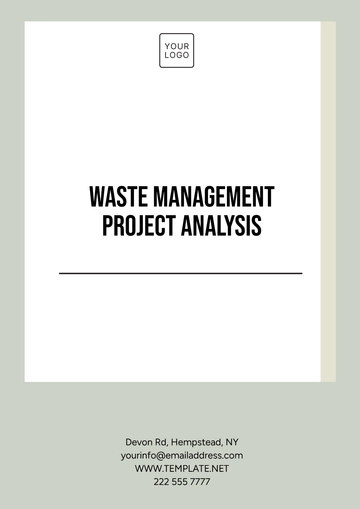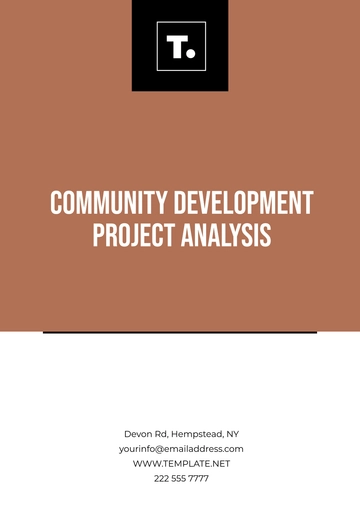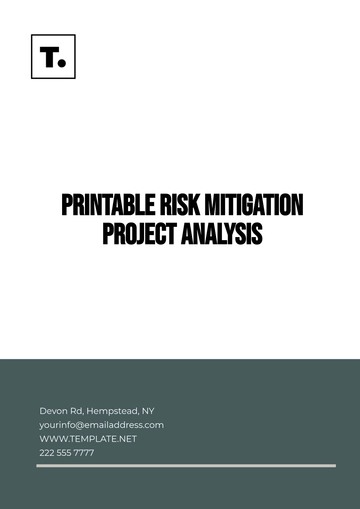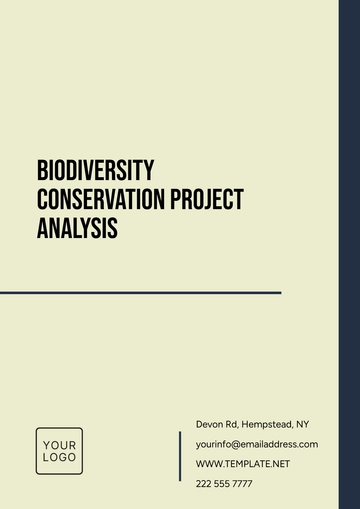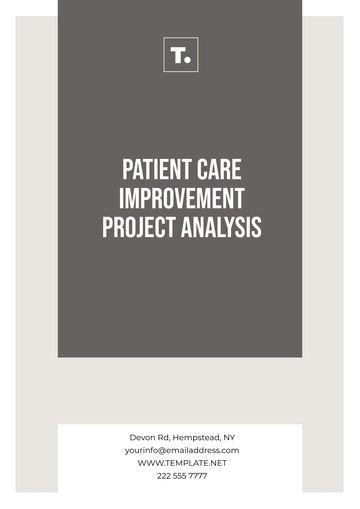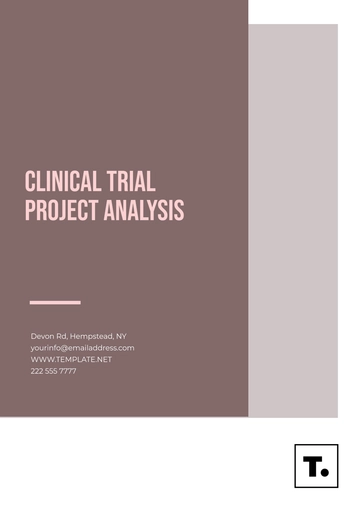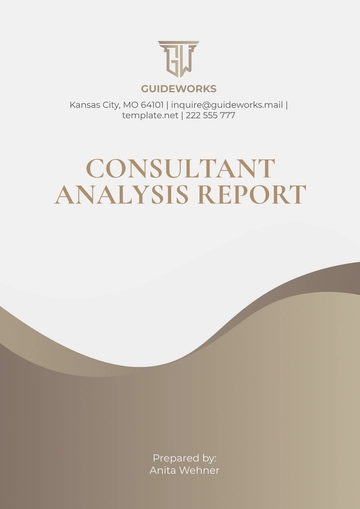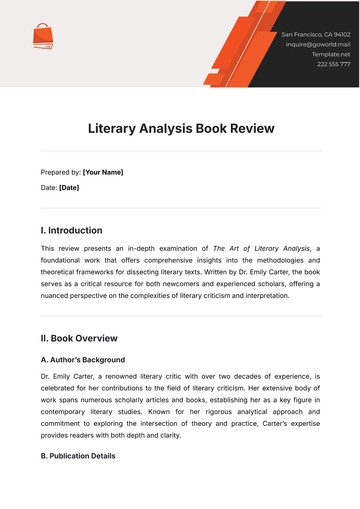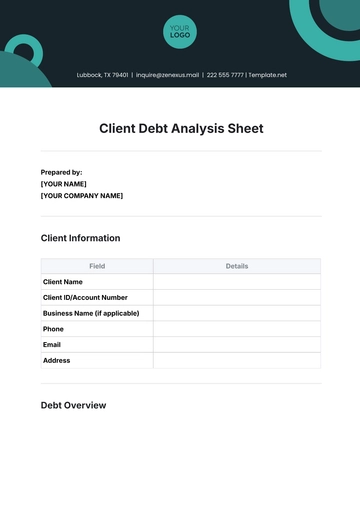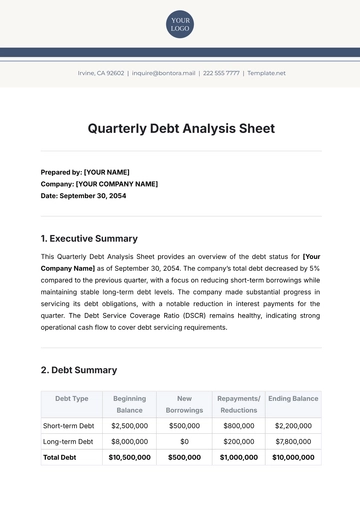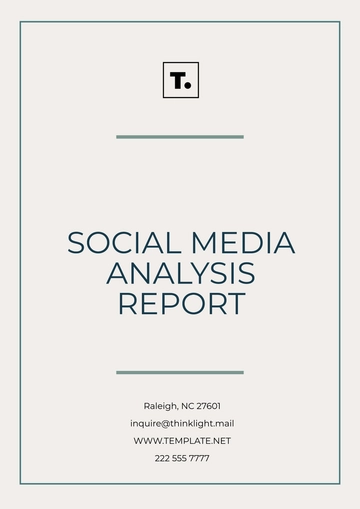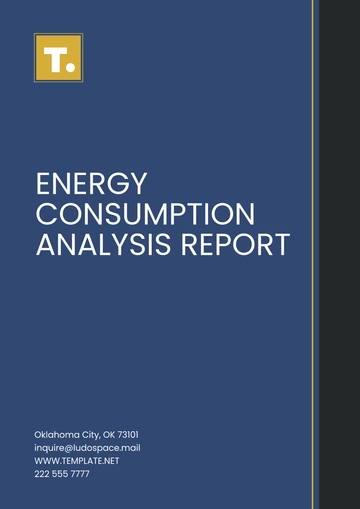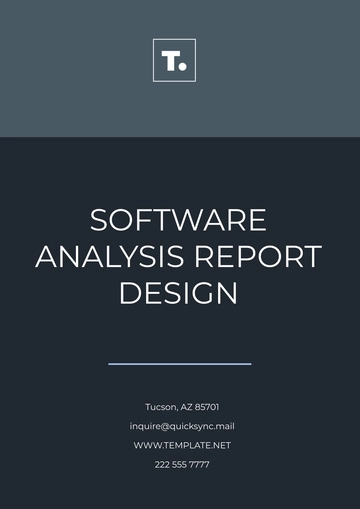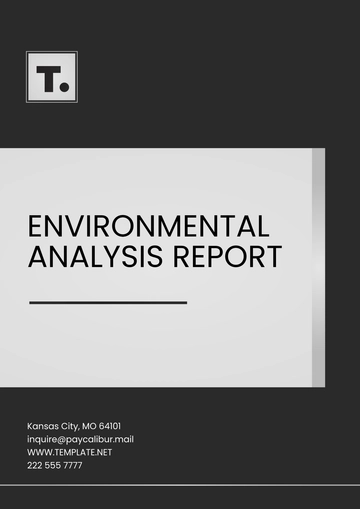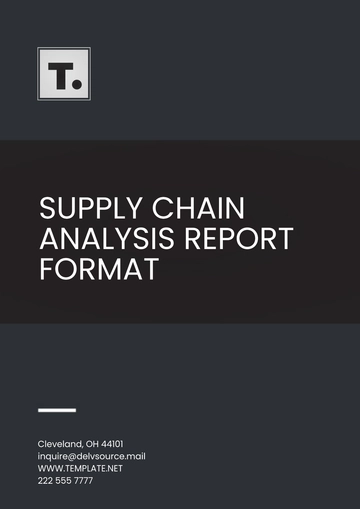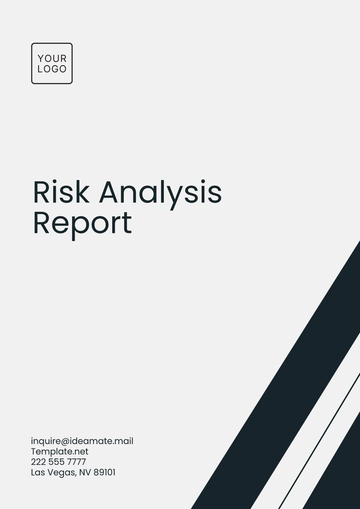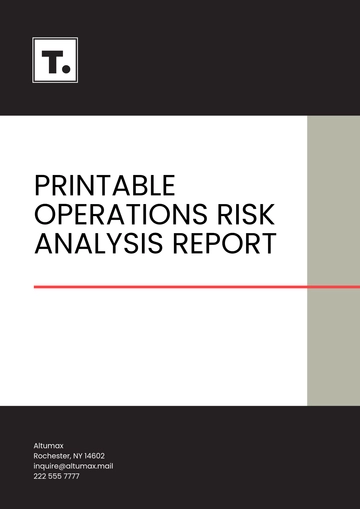Free Cafe Opportunity Analysis
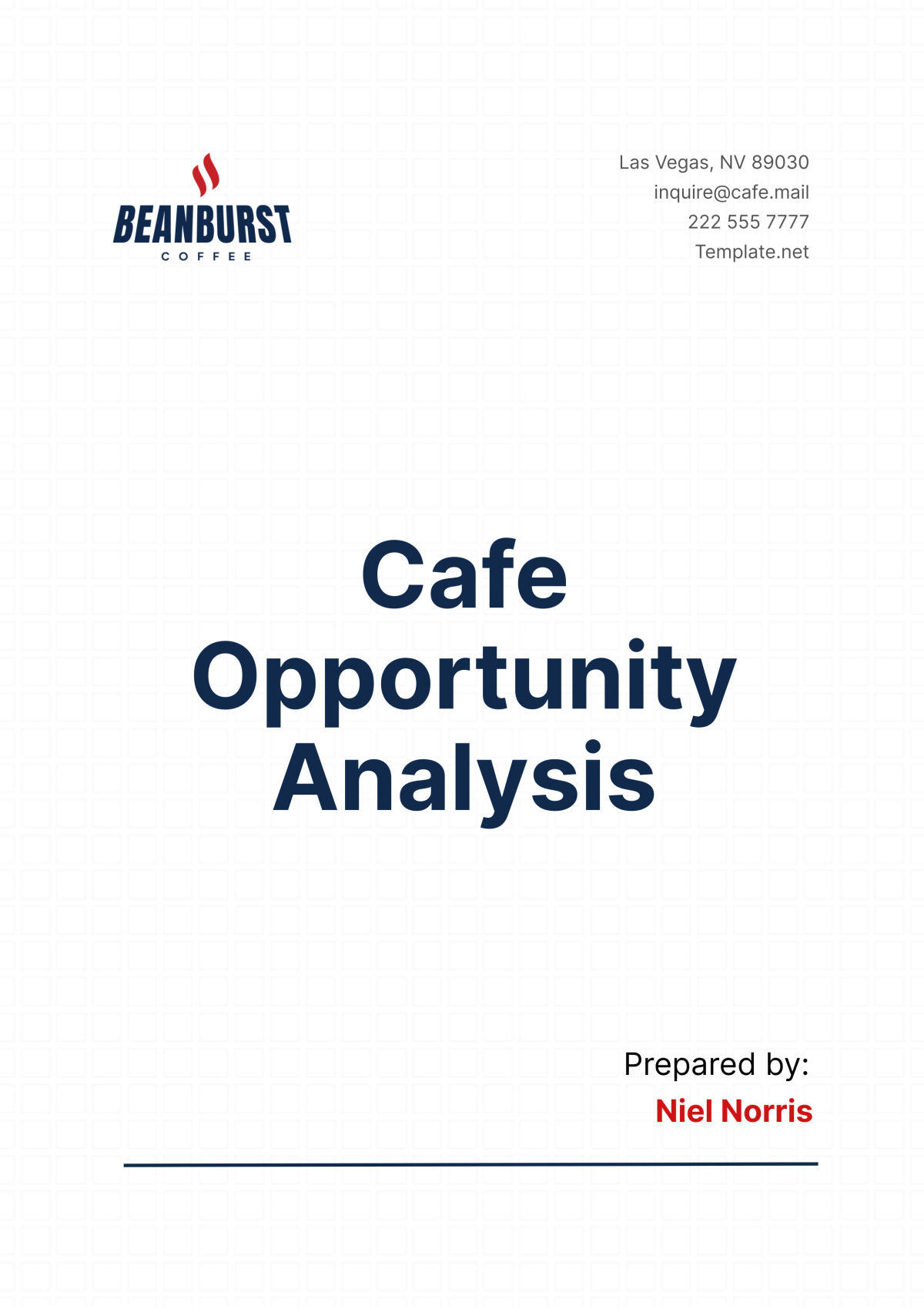
I. Executive Summary
The Cafe Opportunity Analysis delves into the intricate details surrounding the potential market and operational strategies essential for [Your Company Name]'s successful entry and expansion in the cafe industry. This comprehensive analysis encompasses market dynamics, competitive landscape, target audience demographics, financial forecasts, and strategic directives aimed at maximizing growth and profitability.
II. Market Analysis
A. Industry Overview
The cafe industry is experiencing robust growth globally, fueled by evolving consumer preferences and lifestyle changes. According to industry reports, the cafe sector is projected to exceed $100 billion by 2050, indicating ample opportunities for new entrants and existing players to capitalize on this burgeoning market. The proliferation of specialty coffee, coupled with the emergence of cafe culture as a social phenomenon, has contributed significantly to the industry's expansion.
B. Market Trends
Premiumization: Consumers are increasingly inclined towards premium coffee experiences, driving demand for high-quality beans, artisanal brewing methods, and specialty beverages.
Experiential Consumption: Cafe-goers seek more than just a cup of coffee; they desire immersive experiences, such as latte art workshops, cupping sessions, and live music events, enhancing customer engagement and loyalty.
Health and Wellness: With a growing emphasis on health-conscious living, there is a rising demand for organic, plant-based, and functional beverages, presenting opportunities for cafes to offer innovative, nutritious options.
Digital Transformation: Technological advancements have revolutionized the cafe landscape, with mobile ordering, contactless payments, and loyalty programs becoming standard offerings, enhancing convenience and customer satisfaction.
C. Target Demographics
Millennials and Gen Z: These demographic cohorts represent a significant portion of cafe patrons, drawn to cafes as social hubs and workspaces, seeking ambiance, connectivity, and quality beverages.
Urban Professionals: Cafe culture resonates with urban dwellers, particularly professionals seeking respite from the hustle and bustle of city life, making cafes an integral part of their daily routines.
Health-Conscious Consumers: As awareness of health and wellness grows, there is a surge in demand for cafes offering organic, ethically sourced, and health-oriented menu items, catering to discerning tastes and dietary preferences.
D. Competitive Landscape
The cafe industry is characterized by intense competition, with a myriad of players ranging from multinational chains to independent boutique cafes vying for market share. Established brands like Starbucks, Costa Coffee, and Dunkin' have set high standards in terms of product quality, customer service, and brand recognition. However, there is ample room for differentiation and niche positioning, allowing innovative cafe concepts to carve out their unique identities and capture niche markets.
III. SWOT Analysis
A. Strengths
Unique Value Proposition: [Your Company Name] distinguishes itself through its commitment to sourcing premium ingredients, fostering community engagement, and providing exceptional customer service, thereby cultivating a loyal customer base.
Innovative Menu Offerings: With a diverse menu featuring specialty coffee blends, signature beverages, and artisanal pastries, [Your Company Name] caters to a broad spectrum of tastes and preferences, enhancing its appeal and competitiveness.
Strategic Location: Strategically located in high-traffic areas, [Your Company Name] outlets benefit from maximum visibility, footfall, and accessibility, driving sales and brand visibility.
B. Weaknesses
Limited Brand Recognition: As a relatively new entrant in the market, [Your Company Name] may face challenges in terms of brand awareness and visibility, necessitating strategic marketing initiatives to increase brand recognition and recall among target audiences.
Operational Complexity: Managing day-to-day operations, inventory management, and staffing requirements across multiple locations poses operational challenges, requiring efficient systems and processes to streamline operations and ensure consistency.
Dependency on External Factors: [Your Company Name]'s success is contingent upon various external factors, including market dynamics, economic conditions, and changing consumer preferences, necessitating agility and adaptability to navigate uncertainties effectively.
C. Opportunities
Expansion into Emerging Markets: With the global cafe market witnessing exponential growth, particularly in emerging economies, [Your Company Name] has the opportunity to expand its footprint into untapped markets, leveraging first-mover advantage and capitalizing on evolving consumer preferences.
Diversification of Product Offerings: By introducing innovative menu items, such as plant-based alternatives, functional beverages, and seasonal specialties, [Your Company Name] can cater to diverse consumer preferences and tap into new revenue streams, enhancing its competitiveness and relevance.
Digital Innovation: Embracing digital technologies, such as mobile ordering apps, loyalty programs, and personalized marketing initiatives, [Your Company Name] can enhance customer engagement, streamline operations, and drive sales, positioning itself as a leader in the digital cafe landscape.
D. Threats
Intense Competition: The cafe industry is fiercely competitive, with numerous players vying for market share, intensifying competition and exerting pressure on pricing, product differentiation, and customer loyalty.
Economic Uncertainty: Economic downturns, inflationary pressures, and geopolitical uncertainties pose significant risks to [Your Company Name]'s operations, affecting consumer spending patterns, disposable incomes, and business profitability.
Changing Consumer Preferences: Shifts in consumer preferences, lifestyle trends, and cultural norms can impact [Your Company Name]'s market positioning, requiring continuous innovation, adaptation, and market research to stay ahead of evolving trends and consumer expectations.
IV. Financial Analysis
A. Initial Investment
The estimated initial investment for launching a [Your Company Name] cafe outlet includes:
Item | Cost (USD) |
|---|---|
Leasehold Improvements | $150,000 |
Equipment (Coffee Machines, etc.) | $100,000 |
Initial Inventory | $20,000 |
Marketing and Promotion | $50,000 |
Working Capital | $30,000 |
Total | $350,000 |
B. Revenue Projections
Revenue projections for the first three years are based on an average ticket size of $10 and an average of 200 transactions per day.
Year | Revenue (USD) |
|---|---|
1 | $730,000 |
2 | $850,000 |
3 | $1,000,000 |
C. Profit and Loss Statement
A detailed Profit and Loss Statement for the first year:
Item | Amount (USD) |
|---|---|
Revenue | $730,000 |
Cost of Goods Sold (COGS) | $250,000 |
Gross Profit | $480,000 |
Operating Expenses | $350,000 |
Net Profit | $130,000 |
V. Marketing Strategy
A. Branding
Brand Identity: [Your Company Name] endeavors to establish a compelling brand identity centered around quality, authenticity, and community, resonating with target audiences and fostering brand loyalty.
Visual Branding: Consistent use of visual elements, including logo, color palette, typography, and imagery, reinforces [Your Company Name]'s brand identity across all touchpoints, enhancing brand recognition and recall.
B. Digital Marketing
Social Media Engagement: Leveraging popular social media platforms such as Instagram, Facebook, and Twitter, [Your Company Name] will engage with its audience through visually appealing content, interactive posts, and user-generated campaigns, fostering a sense of community and driving brand advocacy.
Email Marketing: Implementing targeted email marketing campaigns, [Your Company Name] will deliver personalized content, exclusive offers, and promotional updates to subscribers, nurturing customer relationships and driving repeat business.
Search Engine Optimization (SEO): By optimizing website content, metadata, and keywords, [Your Company Name] will enhance its online visibility and organic search ranking, ensuring that it remains discoverable to potential customers seeking cafe-related information and experiences.
C. Local Marketing
Community Partnerships: Collaborating with local businesses, cultural institutions, and community organizations, [Your Company Name] will sponsor events, host pop-up cafes, and participate in community initiatives, strengthening its presence and fostering goodwill within the local community.
Influencer Collaborations: Partnering with local influencers, bloggers, and tastemakers, [Your Company Name] will leverage their social influence and credibility to reach new audiences, drive foot traffic to its cafes, and amplify brand messaging through authentic and relatable content.
VI. Operational Plan
A. Location Selection
Strategic Considerations: [Your Company Name] will meticulously evaluate potential locations based on factors such as foot traffic, demographics, competition, and proximity to complementary businesses, selecting high-visibility, high-footfall areas to maximize visibility and accessibility.
Site Analysis: Conducting thorough site analyses, [Your Company Name] will assess the physical layout, infrastructure, zoning regulations, and leasing terms of prospective locations, ensuring compatibility with its operational requirements and business objectives.
B. Store Layout
Customer Experience: Designing cafe interiors that prioritize customer comfort, functionality, and aesthetics, [Your Company Name] will create inviting, Instagram-worthy spaces that encourage socializing, relaxation, and extended dwell times, thereby enhancing the overall customer experience and satisfaction.
Workflow Optimization: Implementing efficient workflow designs, [Your Company Name] will optimize the layout of its cafes to facilitate seamless operations, minimize wait times, and maximize staff productivity, ensuring smooth service and timely order fulfillment.
C. Staffing
Recruitment and Training: [Your Company Name] will recruit and train a team of skilled, knowledgeable, and customer-centric staff members, investing in comprehensive training programs that cover product knowledge, customer service, food safety protocols, and operational procedures, empowering employees to deliver exceptional service and uphold brand standards.
Staffing Levels: Determining optimal staffing levels based on projected sales volumes, peak hours, and operational requirements, [Your Company Name] will maintain a flexible staffing model that allows for scalability, agility, and responsiveness to fluctuating demand patterns, ensuring adequate coverage and service quality at all times.
VII. Product Offerings
A. Coffee and Beverages
Specialty Coffee: [Your Company Name] will offer a curated selection of specialty coffee blends sourced from reputable roasters, featuring single-origin, fair-trade, and organic options, prepared using precision brewing methods to highlight the unique flavors, aromas, and characteristics of each bean.
Artisanal Beverages: In addition to classic espresso-based drinks, [Your Company Name] will introduce signature beverages crafted with house-made syrups, flavor infusions, and innovative ingredients, providing customers with a diverse array of flavor profiles and sensory experiences to choose from.
B. Food Items
Gourmet Pastries: Partnering with local bakeries and pastry chefs, [Your Company Name] will offer a delectable assortment of freshly baked pastries, croissants, muffins, and scones, made with premium ingredients and artisanal techniques to ensure exceptional taste and quality.
Healthy Options: Recognizing the growing demand for nutritious, wholesome fare, [Your Company Name] will introduce a selection of health-conscious menu items such as smoothie bowls, salads, wraps, and grain bowls, featuring fresh, organic, and locally sourced ingredients that cater to diverse dietary preferences and restrictions.
C. Merchandise
Retail Coffee Beans: [Your Company Name] will retail a curated selection of premium coffee beans, grinds, and brewing accessories, allowing customers to replicate the cafe experience at home and enjoy their favorite brews anytime, anywhere.
Branded Merchandise: Capitalizing on its brand equity and popularity, [Your Company Name] will offer a range of branded merchandise including mugs, tumblers, apparel, and accessories, serving as tangible reminders of the cafe experience and facilitating brand advocacy and loyalty among customers.
VIII. Risk Management
A. Identified Risks
Market Risks: Fluctuations in consumer preferences, economic conditions, and competitive dynamics may impact [Your Company Name]'s market positioning, sales performance, and revenue growth, necessitating continuous monitoring, analysis, and adaptation to mitigate risks and seize opportunities.
Operational Risks: Operational challenges such as supply chain disruptions, equipment failures, staffing shortages, and regulatory compliance issues may disrupt [Your Company Name]'s day-to-day operations, compromising service quality, customer satisfaction, and brand reputation if not addressed proactively and effectively.
Financial Risks: Financial risks such as cost overruns, revenue shortfalls, cash flow constraints, and unforeseen expenses may strain [Your Company Name]'s financial resources and liquidity, jeopardizing its profitability, solvency, and long-term viability, requiring prudent financial management and contingency planning to safeguard against adverse outcomes.
B. Mitigation Strategies
Diversification: [Your Company Name] will diversify its product offerings, revenue streams, and geographic footprint to reduce reliance on any single market segment, product category, or geographical region, minimizing exposure to specific risks and enhancing overall business resilience and stability.
Risk Assessment: [Your Company Name] will conduct regular risk assessments and scenario analyses to identify, evaluate, and prioritize potential risks and vulnerabilities across its operations, enabling proactive risk mitigation measures, contingency planning, and resource allocation to minimize potential impact and maximize readiness to respond to adverse events.
Insurance Coverage: [Your Company Name] will maintain comprehensive insurance coverage, including property insurance, liability insurance, business interruption insurance, and cyber insurance, to protect against unforeseen losses, liabilities, and disruptions, providing financial security and peace of mind in the event of unexpected incidents or emergencies.
IX. Conclusion
The Cafe Opportunity Analysis for [Your Company Name] outlines a strategic roadmap for success in the dynamic and competitive cafe industry. By capitalizing on market trends, leveraging strengths, addressing weaknesses, seizing opportunities, and mitigating threats, [Your Company Name] can position itself for sustainable growth, profitability, and success, establishing itself as a leading player in the global cafe market.
- 100% Customizable, free editor
- Access 1 Million+ Templates, photo’s & graphics
- Download or share as a template
- Click and replace photos, graphics, text, backgrounds
- Resize, crop, AI write & more
- Access advanced editor
Uncover potential for success with the Cafe Opportunity Analysis Template from Template.net. This customizable and editable document provides a structured framework for evaluating market opportunities, competition, and potential risks for your cafe venture. Seamlessly tailored in our AI Editor Tool, it helps you make informed decisions and capitalize on lucrative opportunities in the cafe industry.
